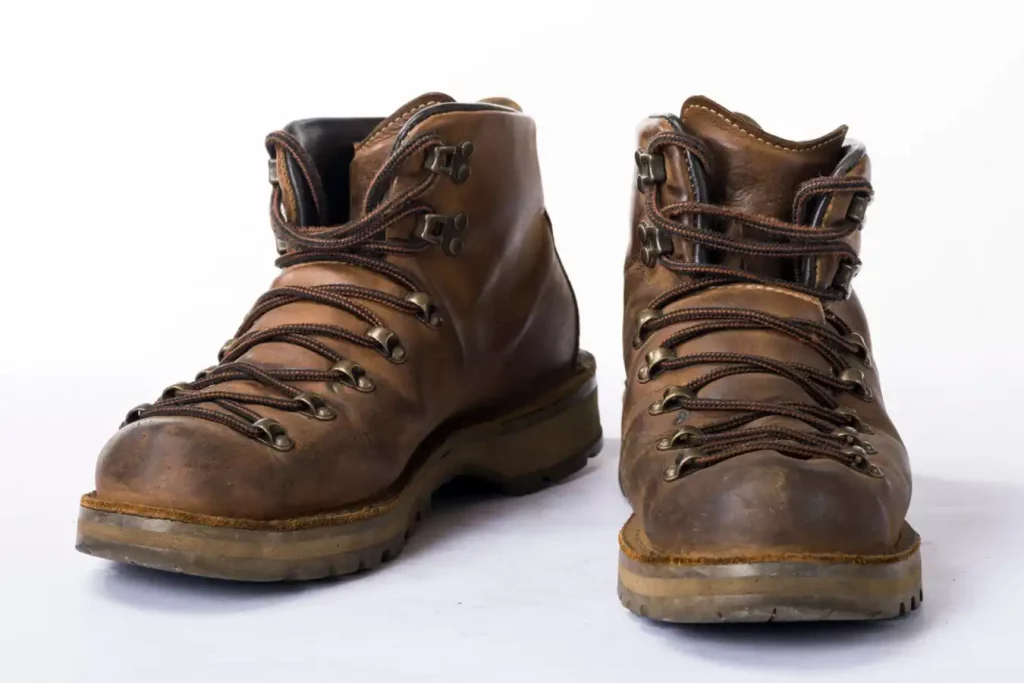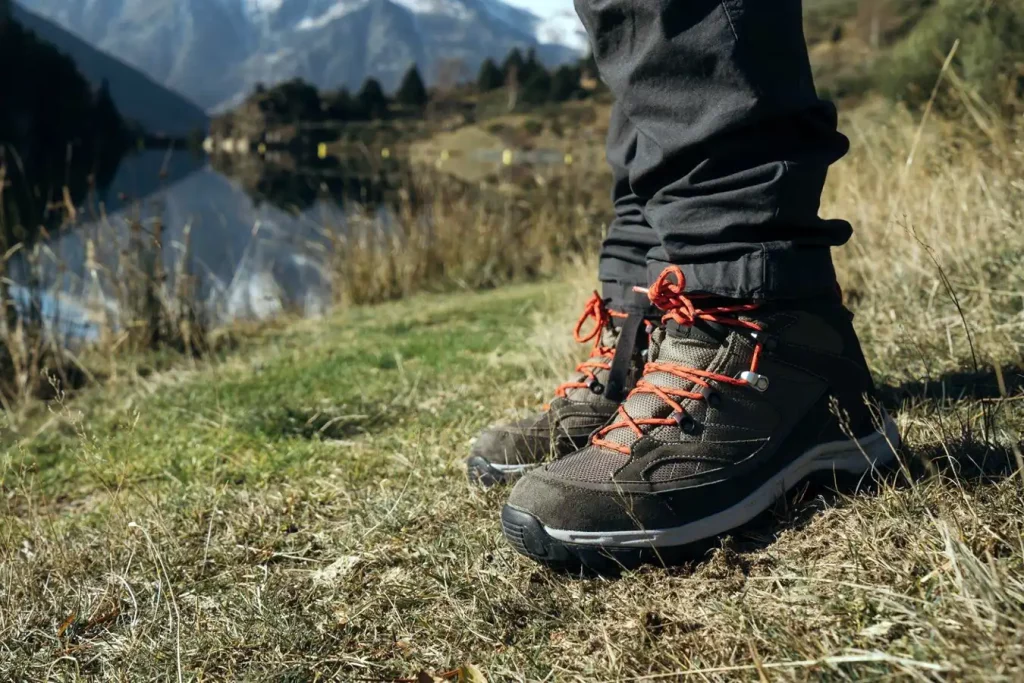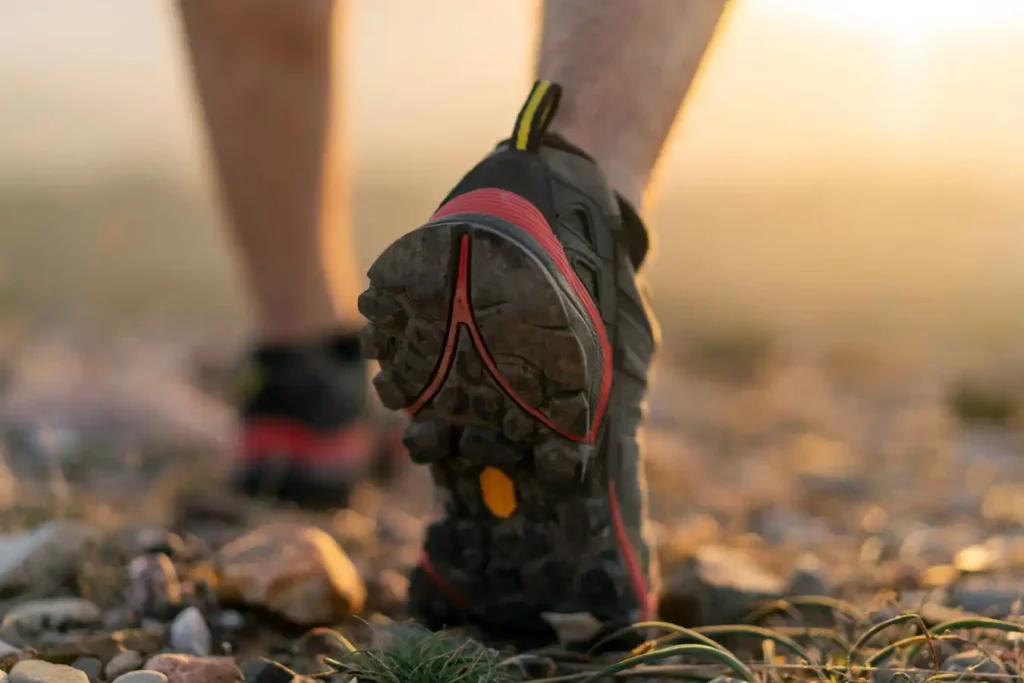“How long do hiking boots last?” That’s a question any avid trekker, like you and me, has pondered mid-hike.
It’s not just about the miles you’ve covered, but the memories etched with each step.
Yet, wouldn’t it be a bummer if our trusty boots gave up before the next big adventure?
A boot’s lifespan isn’t just about the brand—it’s about care, terrain, and a few unexpected factors.
Join me as we lace up and explore what really puts the ‘durable’ in those hiking companions.
The Lifespan of Hiking Boots
The Average Lifespan of Hiking Boots
Typically, a good pair of hiking boots can serve you well for about 500 to 1,000 miles of hiking. But translating this mileage to time can be a bit tricky as it depends on your hiking habits. For an avid hiker hitting the trails every weekend, this could translate to around 1-2 years. On the other hand, a casual hiker who ventures out only a few times a year may find that their boots last for many more.
But remember, these are general guidelines and not hard rules. There are instances of boots staying strong even after clocking in 1,500 miles or, conversely, waving the white flag way before the 500-mile mark. What makes the difference? It’s a combination of many factors that influences how long your hiking boots will last.
Factors That Influence the Lifespan of Hiking Boots
- Quality of the boots: High-quality boots are typically crafted from durable materials and robust construction techniques. They might cost more upfront but could save you money in the long run by lasting longer.
- How you use them: Are you walking light trails in the local park, or are you conquering rocky mountain terrains? The tougher the use, the quicker your boots will wear out.
- Maintenance: Like any worthy investment, hiking boots require care. Cleaning them after hikes, drying them properly, and conditioning the leather are some maintenance tasks that can extend their lifespan.
- Proper Fit: Ill-fitted boots not only cause discomfort but can also wear out faster due to increased friction and strain on certain areas.
- Frequency of use: Just like running shoes, hiking boots have a finite amount of stress they can handle before they start breaking down. The more you use them, the quicker they’ll need replacing.
Overall, hiking boots generally last between 500 to 1,000 miles, which often equates to around 3-5 years with moderate use, but this lifespan can vary based on factors such as construction quality, proper fit, usage frequency, maintenance, and the type of terrain they’re used on.
Just remember, even the best cared for boots won’t last forever. When your boots start showing signs of excessive wear, like loss of waterproofing, sole separation, or reduced support, it might be time to say goodbye and invest in a new pair.
Construction and Materials of Hiking Boots
How the Construction of Hiking Boots Affects Their Lifespan
The way your hiking boots are constructed plays a significant role in their lifespan. Let’s take, for instance, the soles. Hiking boots with stitched soles might give a more flexible feel but can wear out quicker and are more susceptible to water leakage. On the other hand, boots with cemented or molded soles tend to have a longer life and better water resistance, but might not feel as flexible.

Moreover, the method used to attach the upper part of the boot to the sole also impacts the boot’s durability. Boots made using a direct attach or injection molding process often offer superior durability and a longer lifespan.
The Impact of Materials on The Durability of Hiking Boots
The materials used in your hiking boots are also key to their durability. Boots made from full-grain leather are known for their toughness and excellent water resistance. While these boots might take a bit longer to break in, their durability often justifies the initial discomfort.
Synthetic materials, like polyester and nylon, are lighter and break in more easily, but they tend not to last as long as their leather counterparts. They’re also more susceptible to damage from sharp rocks and sticks encountered on the trail.
In the middle of the spectrum, you might find boots made from split-grain leather combined with synthetic materials. They strike a balance between durability and lightness, but compromise on water resistance.
The Role of Proper Fit in Hiking Boot Durability
Why a Proper Fit Matters for Longevity
Fit isn’t just about comfort when it comes to hiking boots; it’s also tied directly to durability. Boots that fit well distribute your weight evenly across the soles, causing less wear and tear on any one area. Misfit boots, on the other hand, can wear unevenly, leading to quicker degradation in certain areas. Over time, this can compromise the structure and integrity of the boots.

Signs of Improper Fit that Can Reduce Boot Life
There are several signs of a poor fit that can lead to reduced boot life. If your foot slides forward when you’re going downhill, causing your toes to hit the front of the boot, this can wear out the front part quickly. Similarly, if your boots are too tight, the increased pressure and friction can cause the upper part of the boots to degrade faster.
Another sign of a poor fit is if your heel lifts when you walk. This constant movement can wear down the heel counter, which provides structure and stability to the boot. It also increases the likelihood of developing blisters, which is an inconvenience no hiker wants to deal with.
Know more: How Are Sandals Supposed to Fit
Usage and Maintenance of Hiking Boots
The Impact of Hiking Frequency and Terrain on Boot Lifespan
The frequency of your hikes and the terrain you cover play a significant role in determining the lifespan of your boots. Hiking boots used for weekend trips a couple of times a year are going to last significantly longer than those worn for frequent long-distance backpacking.
Moreover, the kind of terrain you’re hiking on can be a major factor. Rocky trails with sharp rocks, gravel, or scree are going to cause more wear and tear on your boots than a soft dirt path. If you’re regularly crossing rivers or hiking in wet conditions, water can speed up the degradation of both synthetic and leather materials.
The Importance of Regular Cleaning and Maintenance
Regular maintenance and cleaning of your boots can extend their lifespan dramatically. Cleaning off dirt and mud prevents the materials from drying out and cracking over time. Also, using conditioners or waterproofing treatments, especially for leather boots, can help keep them in top condition and enhance their durability.
Always remember to dry your boots properly after a hike. Wet boots should be dried slowly at room temperature to prevent the materials from drying out and cracking. Never place them near a direct heat source, like a heater or a fire, as this can cause the materials to shrink or become brittle.
Read more: How Do Salomon Shoes Fit
Indicators That Your Hiking Boots Need to be Replaced
Worn-Out Soles
One of the most noticeable signs that your hiking boots need replacement is worn-out soles. Over time, the treads on the bottom of your boots wear down. This can reduce traction, leading to slips and falls, especially on wet or loose terrain. If the soles are worn down to the point where the treads are barely visible, it’s time to invest in a new pair of boots.
Damaged Upper Material
Another indicator that it’s time for new boots is when the upper materials begin to break down. This can show up as cracks or holes in the material, loose or broken threads, or areas where the upper part of the boot is starting to separate from the sole. These problems can let water in and compromise the support that your boots provide, making your hikes less comfortable and potentially hazardous.
Interior Wear and Tear
Finally, don’t overlook the inside of your boots. The insole and interior lining of your boots can also degrade over time. If the insole is worn thin or the lining is ripped or worn, your boots may no longer provide adequate cushioning or insulation. This can lead to discomfort, blisters, or cold feet during your hikes.
To know more: How Long Do Shoe Inserts Last
How to Extend the Lifespan of Your Hiking Boots
Regular Cleaning and Maintenance
Cleaning your boots after each hike can help preserve their lifespan. Use a soft brush to remove dirt and grime. If the boots are very dirty, use warm water and a mild soap. It’s essential to allow them to dry completely before storing them. For leather boots, consider using a conditioner after cleaning to keep the material supple and prevent cracks.
Moreover, apply a waterproofing treatment periodically. It will not only keep your feet dry on rainy hikes but also protect the boots’ material from water damage.
Proper Storage
Store your hiking boots in a dry, well-ventilated area away from direct sunlight or heat sources. Humidity or heat can cause materials to degrade or molds to form, reducing the boot’s overall lifespan. Boots should be stored upright to maintain their shape. Using a boot stand or stuffing them with newspaper can help keep them upright.
Resoling and Repairing
Don’t throw your boots out at the first sign of wear. Some high-quality hiking boots can be resoled, which can extend their life by several years. Minor damages, like loose threads or small holes, can often be repaired either at home or by a professional. However, keep in mind that not all boots can be resoled, and significant damage to the upper material might not be repairable.
Read more: How Much Do Ski Boots Weigh
FAQs about Lifespan of Hiking Boots
How Many Years Will Hiking Boots Last?
How Do You Tell if Your Hiking Boots are Worn Out?
How Many Miles Do Good Hiking Boots Last?
How Long Do Merrell Hiking Boots Last?
Final Thoughts
The lifespan of your hiking boots is not only dependent on the materials they’re made of and their construction, but also on how well they fit, how frequently they’re used, the terrain they’re used on, and how they’re cleaned and stored. By investing in a quality pair of boots and taking good care of them, you can enjoy many miles of comfortable and safe hiking.
Remember, boots are your best hiking companion. They bear the brunt of the journey, protect your feet, and let you enjoy your adventure worry-free. So, invest in their care, and they’ll make sure to take you places far and wide. Happy hiking!
Read next: Mountaineering Boots Vs Hiking Boots


